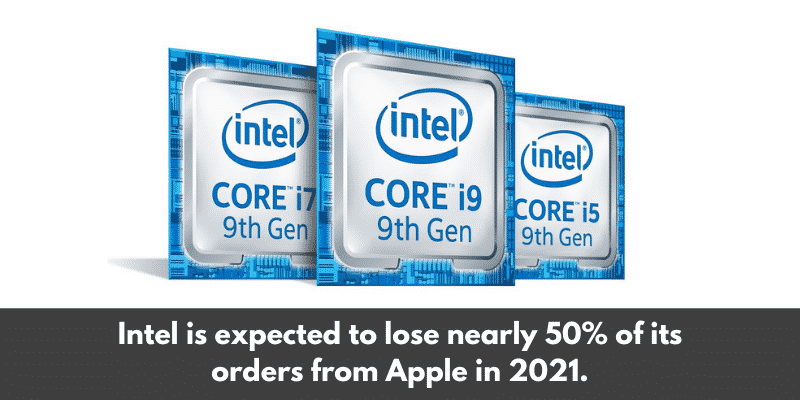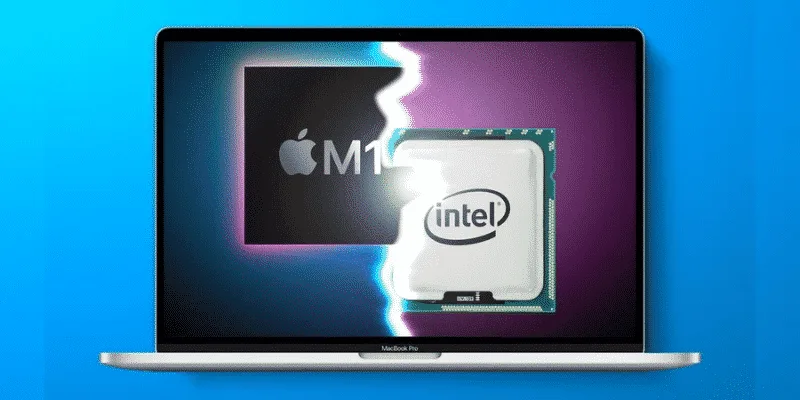Coming years might be terrifying for Intel as it may see its market share fall to a new low. This is largely due to Apple’s decision to use the Apple Silicon processors in its Mac computers instead of Intel processors.
Apple has announced the beginning of its 2-year-long transition which will see all of its Mac computers (both desktops, and laptops), use Apple’s own Silicon processors. Apple has so far managed to release 4 Macs with the first iteration of Apple silicon, M1. It is expected to complete the transition cycle by next year.
The currently released 4 models will cost Intel an overall loss of 50% of its orders from Apple. By the end of the transition, Intel will lose all orders from the tech mammoth.

In addition to this, Apple’s in-house developed Arm-based processor series is also a concern for Intel. These processors are predicted to cause a huge dent in Intel’s share in the upcoming year.
The Dip in Numbers
As we discussed earlier, Intel is expected to lose nearly 50% of its orders from Apple in 2021. By 2023, the company will eventually obtain no orders from Apple. This means Intel loses Apple’s 10% market share while competitor, AMD will hold on to its other 10% share. This might lead to a slip below 80% in 2023 in Intel’s share in the notebook market.
Intel’s Possible Strategy
Bloomberg recently reported that Apple has been testing high-end Apple silicon chips. These vary from 32 high-performance cores to 128 core options for graphics in their future Mac models. Intel is a big player and it is obviously aware of the impact losing Apple will have. Seeing the scenario, Intel has already run multiple marketing campaigns against Macs. These campaigns have the sole purpose to showcase that laptops powered by Intel processors are much superior as compared to Apple silicon Macs.








